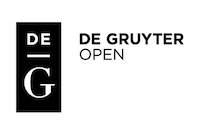The impact of selected adjuvants on glyphosate efficacy for control of field bindweed (Convolvulus arvensis l.)
Aleš KOLMANIČ and Mario LEŠNIK
pp. 11-17
ABSTRACT
The effects of different adjuvants in formulating glyphosate-based herbicides and their efficacy in controlling field bindweed (Convolvulus arvensis L.) were studied. The formulations were based on mixtures of glycerine (GL), phosphate ester of ethoxylated isodecyl alcohol (PEA) and alkyl polyglucoside (APG) adjuvants at different ratios. Effects of adding ammonium sulfate (ASF) to the glyphosate spray solution were also studied. Herbicides were applied to bindweed plants grown in pots with an experimental sprayer at a volume of 250 l/ha. Visual assessments of efficacy were carried out 3 weeks and 6 months after application, when the assessment of efficacy by weighting above– and underground plant mass was also performed. The best suppression of field bindweed was observed after the 3 week assessment, in the formulations with a high proportion of PEA or an equal proportion of PEA and APG. The best control regarding the assessment of above– and underground plant mass after 6 months was achieved by using formulations with a high proportion of GL with the addition of ASF. The achieved efficacy rates of all formulations after 6 months differed from the ones observed after 3 weeks, and the efficacy observed after 6 months was on average only 60–75 % of the observed after 3 weeks. No sufficient control of the bindweed rhizome system was observed after one treatment, regardless of using any of the selected glyphosate formulations.
Key words: herbicide, formulation, weed, control
Slovenian:
Učinki izbranih dodatkov na učinkovitost pripravkov na osnovi glifosata za zatiranje njivskega slaka (Convolvulus arvensis L.)
Preučevali smo učinke različnih dodatkov za formuliranje herbicidov na osnovi glifosata na njihovo učinkovitost pri zatiranju njivskega slaka (Convolvulus arvensis L.). Preučevani dodatki so bili na osnovi zmesi glicerina (GL), fosfatnega estra etoksiliranega alkohola (PEA) in alkil poliglukozida (APG). Dodatno smo preučevali učinke dodajanje amonijevega sulfata (ASF). Pripravke smo nanašali na rastline slaka, ki so uspevale v lončkih s poskusno škropilnico pri porabi 250 l/ha. Vizualne ocene učinkovitosti smo izvedli 3 tedne in 6 mesecev po nanosu herbicidov. Dodatno smo 6 mesecev po nanosu opravili oceno učinkovitosti s tehtanjem nadzemne in podzemne mase rastlin. Najvišjo učinkovitost po 3 tednih je imela formulacija z visokim deležem PEA ali z enakim deležem PEA in APG. Najvišjo učinkovitost glede na tehtanje nadzemne in podzemne mase rastlin po 6 mesecih so imele formulacije z visokim deležem GL ter z dodatkom ASF. Učinkovitosti vseh formulacij po 6 mesecih so se značilno razlikovale od ugotovljenih po 3 tednih. Po 6 mesecih so bile v povprečju samo še 60-75% od ugotovljenih pri 3 tednih. Rezultati poskusa nakazujejo, da s samo eno aplikacijo pripravkov, ne glede na uporabljene formulacijske dodatke v poskusu, ne moremo poškodovati rizomskega sistema slaka do te mere, da bi s tem povzročili trajno uničenje rastline.
Ključne besede: herbicid, formulacija, plevel, kontrola
CITATED REFERENCES :
1. Baylis AD. Why 1. glyphosate is a global herbicide: strengths, weaknesses and prospects. Pest. Manag. Sci. 2000;56(4):299-308.
2. Bleiholder H. Methods for the layout and evaluation of field trials. BASF Crop Protec. Div., Limburgerhof, Germany. 1989.
3. Coombs EM, Clark JK, Piper GL, Cofrancesco AF. Biological control of invasive plants in the United States. Corvallis, OR: Oregon State University Press. 2004;151.
4. DeGennaro PF, Weller SC. Differential susceptibility of field bindweed (Convolvulus arvensis) Biotypes to glyphosate. Weed Sci. 1984;32:472-476.
5. Feldman JM, Gracia O. 1977. Studies of weed plants as sources of viruses V. occurrence of alfalfa mosaic virus on origanum crops and on some weeds in Argentina. J. Phytopathol. 1977;90:87-90.
6. Holm LG, Plucknett DL, Pancho JV, Herberger JP. 1977. The World’s Worst Weeds: Distribution and Biology. Honolulu, HI: University Press of Hawaii. 1977;609.
7. Hoss NE, Al-Khatib K, Peterson DE, Loughin TM. Efficacy of glyphosate, glufosinate, and imazethapyr on selected weed species. Weed Sci. 2003;51(1):110-117.
8. Kirkwood RC. Use and mode of action of adjuvants for herbicides–a review of some current work. Pestic. Sci. 1993;38(2-3):93-102.
9. Lauridson TC, Wilson RG, Haderlie LC. Effect of moisture stress on Canada thistle (Cirsium arvense)
control, absorption, and translocation of herbicide. Weed Sci. 1983;31:674-680.
10. Lindenmayer RB, Nisses SJ, Westra PP, Shaner DL, Brunk G. Aminocyclopyrachlor absorption, translocation and metabolism in field bindweed (Convolvulus arvensis). Weed Sci. 2013;61:63-67.
11. Pereira W, Crabtree G. Absorption, translocation, and toxicity of glyphosate and oxyfluorfen in yellow nutsedge (Cyperus esculentus). Weed Sci. 1986;34:923-929.
12. Powles SB, Preston C. Evolved 12. glyphosate resistance in plants: biochemical and genetic basis of resistance. Weed Technol. 2006;20(2):282-289.
13. Rao VS. Principles of Weed Science, Second Edition. Oxford and IBH Publishing Co. Pvt. Ltd. 2000;564.
14. Riechers DE, Wax LM, Liebl RA, Bush DR. Surfactant increased glyphosate uptake into plasma membrane vesicles isolated from common lambsquarters leaves. Plant Physiol. 1994;105(4):1419-1425.
15. Sherrick SL, Holt HA, Hess FD. Absorption and translocation of MON 0818 adjuvant in field bindweed (Convolvulus arvensis). Weed Sci. 1986b;34(6):811-823.
16. Sherrick SL, Holt HA, Hess FD. Effects of adjuvants and environment during plant development on glyphosate absorption and translocation in field bindweed (Convolvulus arvensis). Weed Sci. 1986a;34(6):811-816.
17. Steckel GJ, Wax LM. Absorption and translocation of glufosinate on four weed species. Weed Sci. 1997;45:378-381.
18. Stone AE, Peeper TF, Kelley JP. Efficacy and acceptance of herbicides applied for field bindweed (Convulvulus arvensis) Control. Weed Technol. 2005;19(1):148-153.
19. Tamaki G, Moffat HR, Turner JE. The influence of perennial weeds on the abundance of the redbacked cutworm on asparagi. Environ. Entomol. 1975;4:274-276.
20. Westra P, Chapman P, Stahlman PW, Miller SD, Fay PK. Field bindweed (Convolvulus arvensis) control with various herbicide combinations. Weed Technol. 1992;6:949-955.
21. Zabkiewicz JA. Adjuvants and herbicidal efficacy-present status and future prospects. Weed Res. 2000;49(1):139-149.

